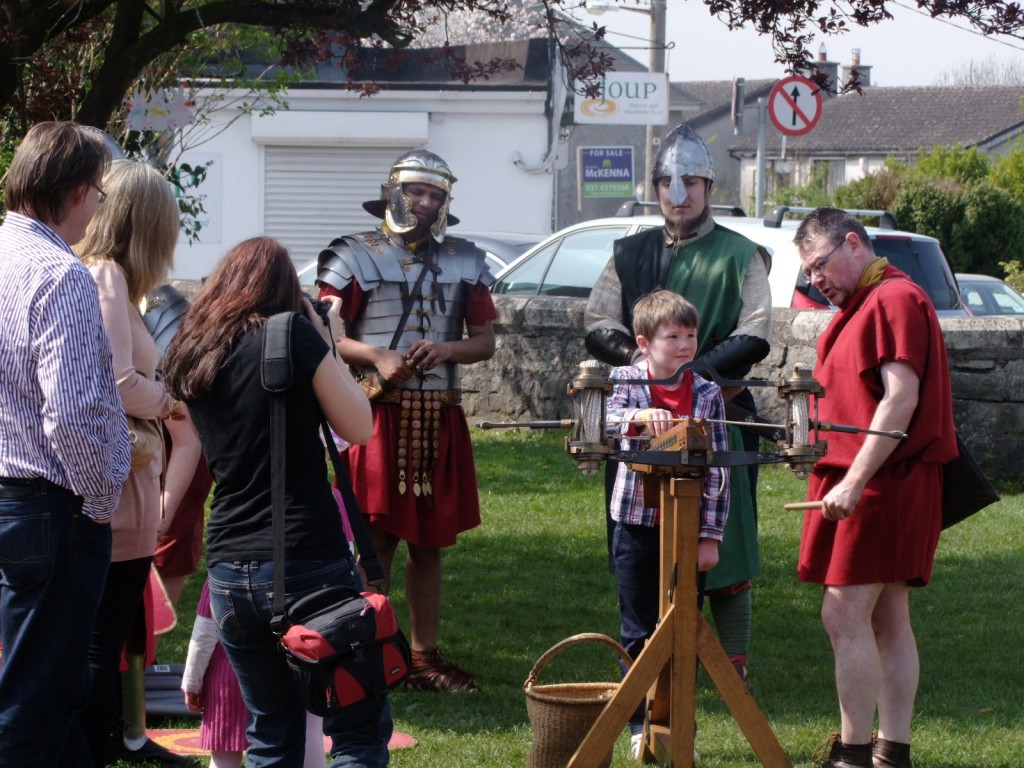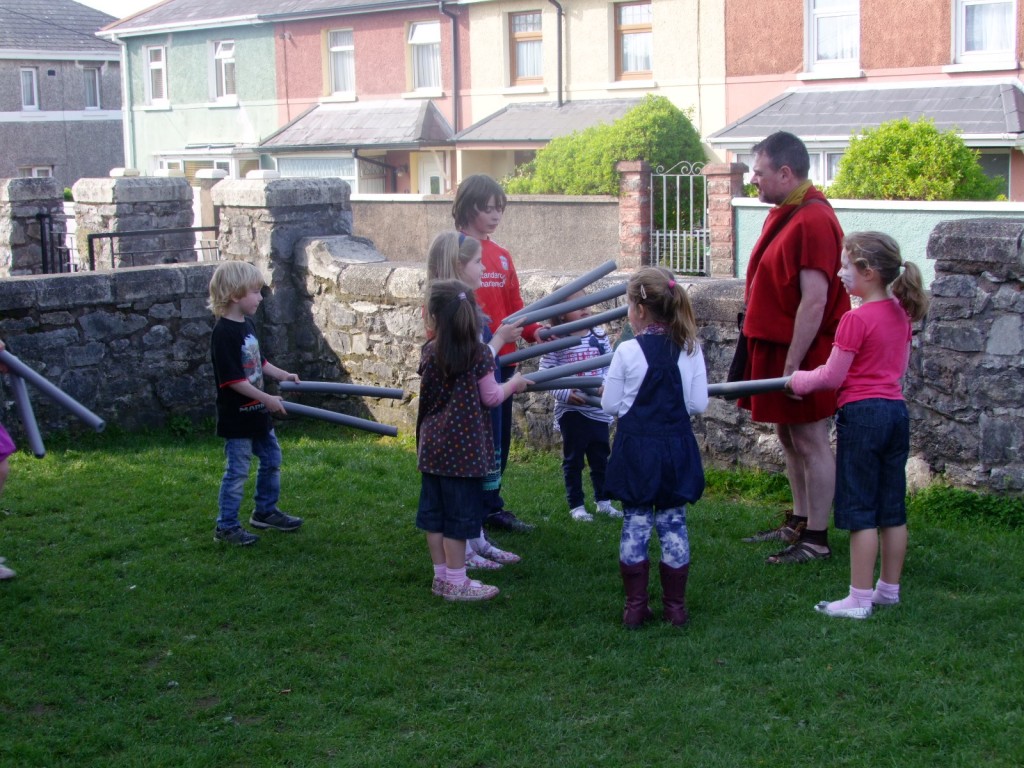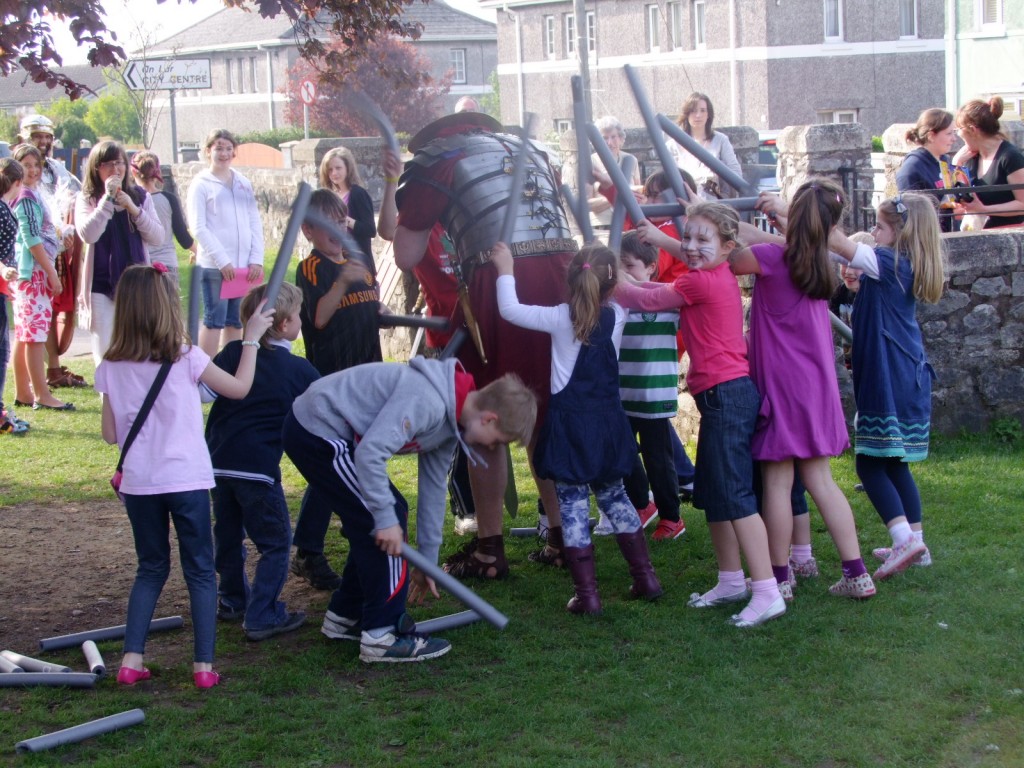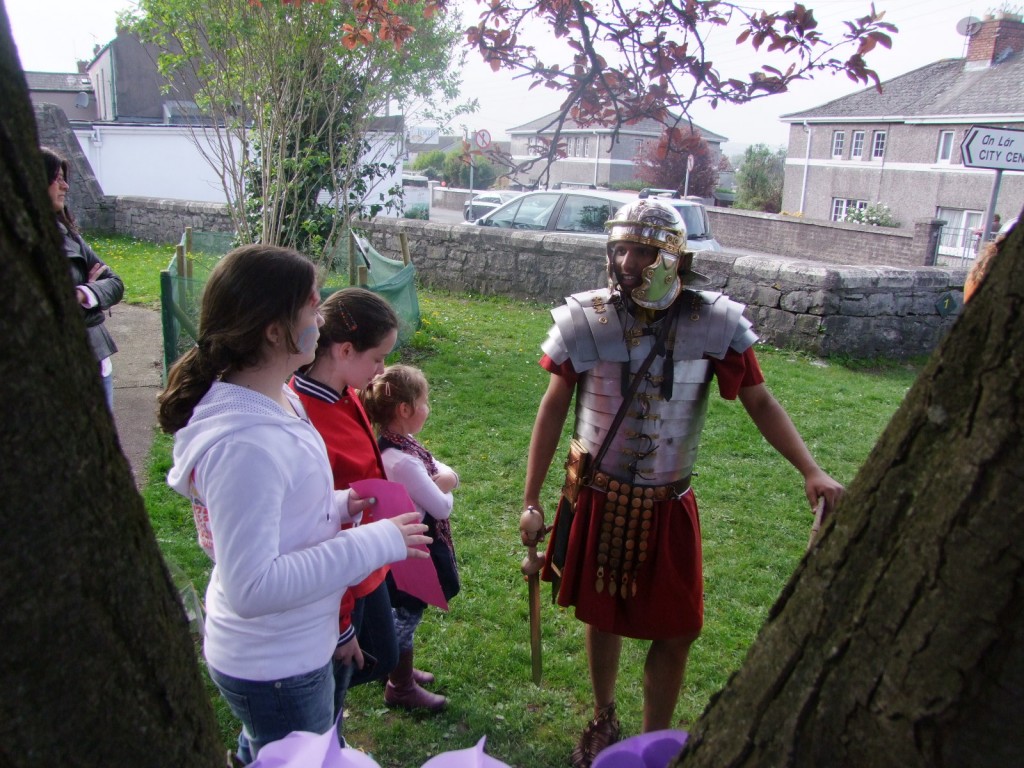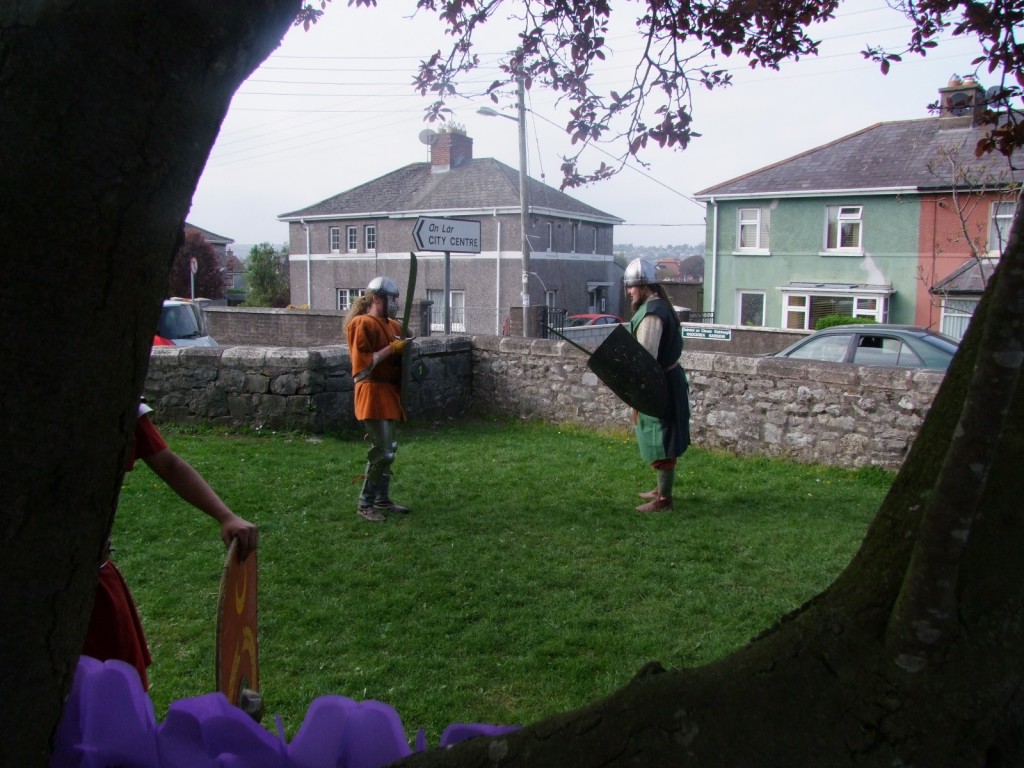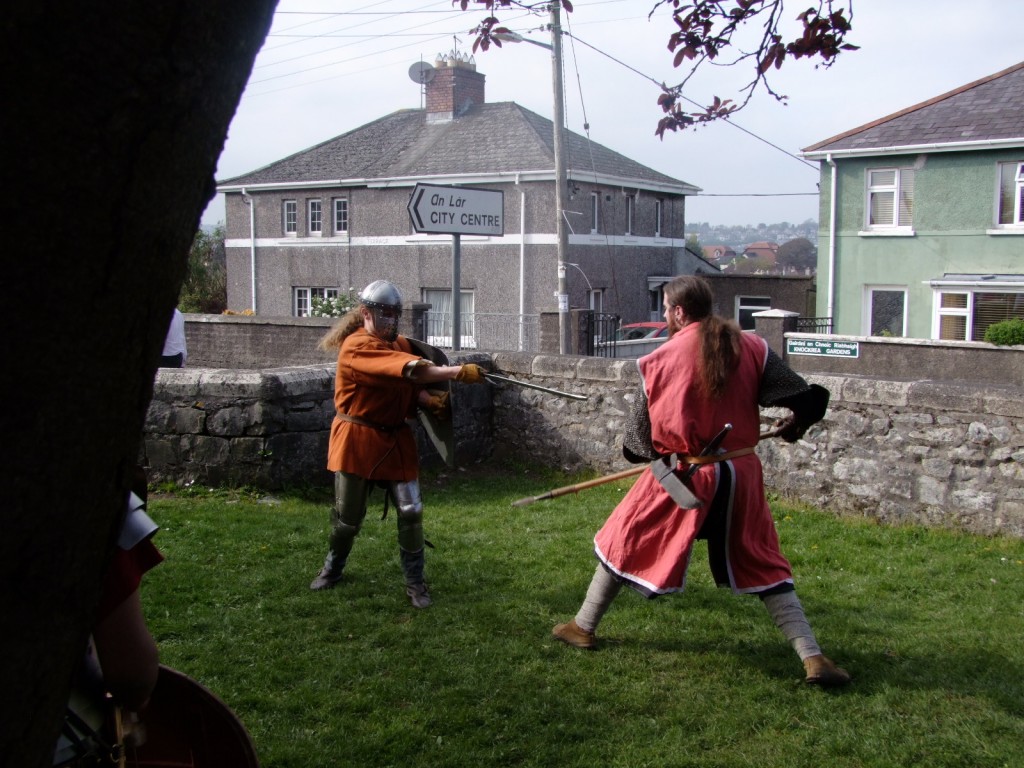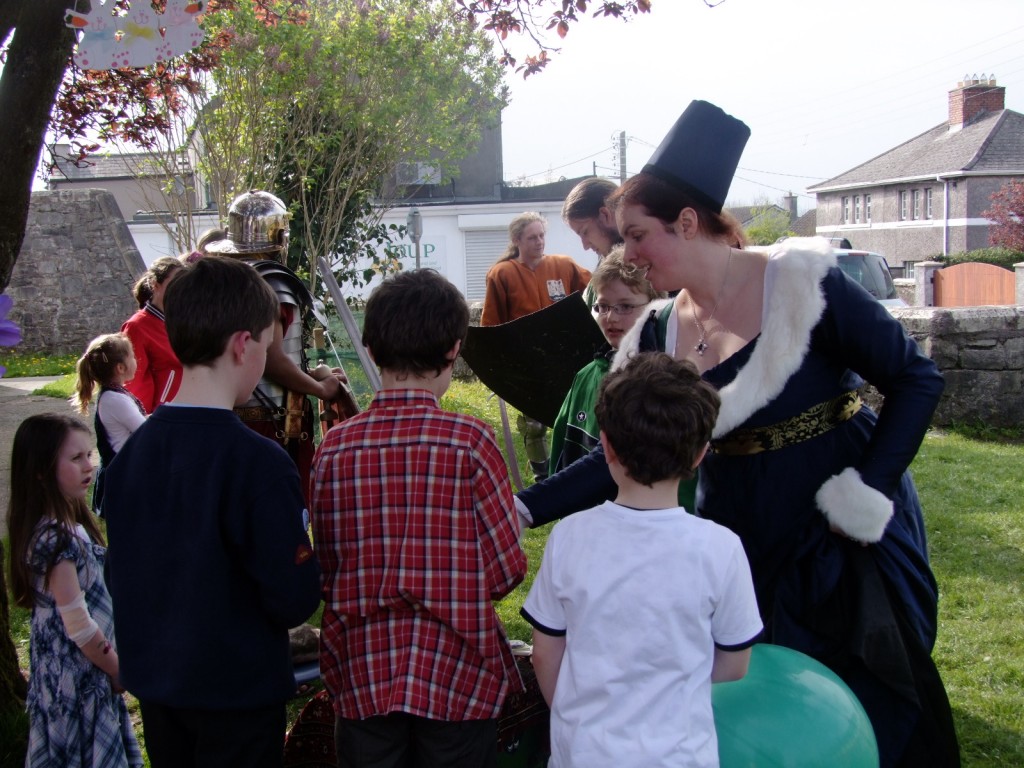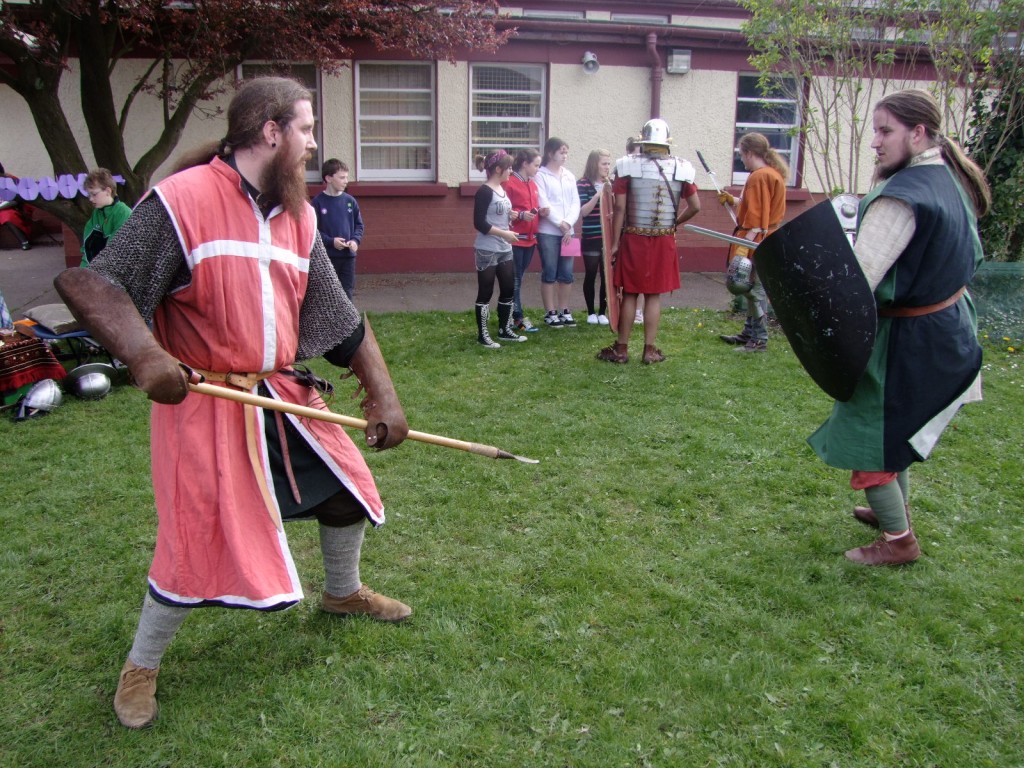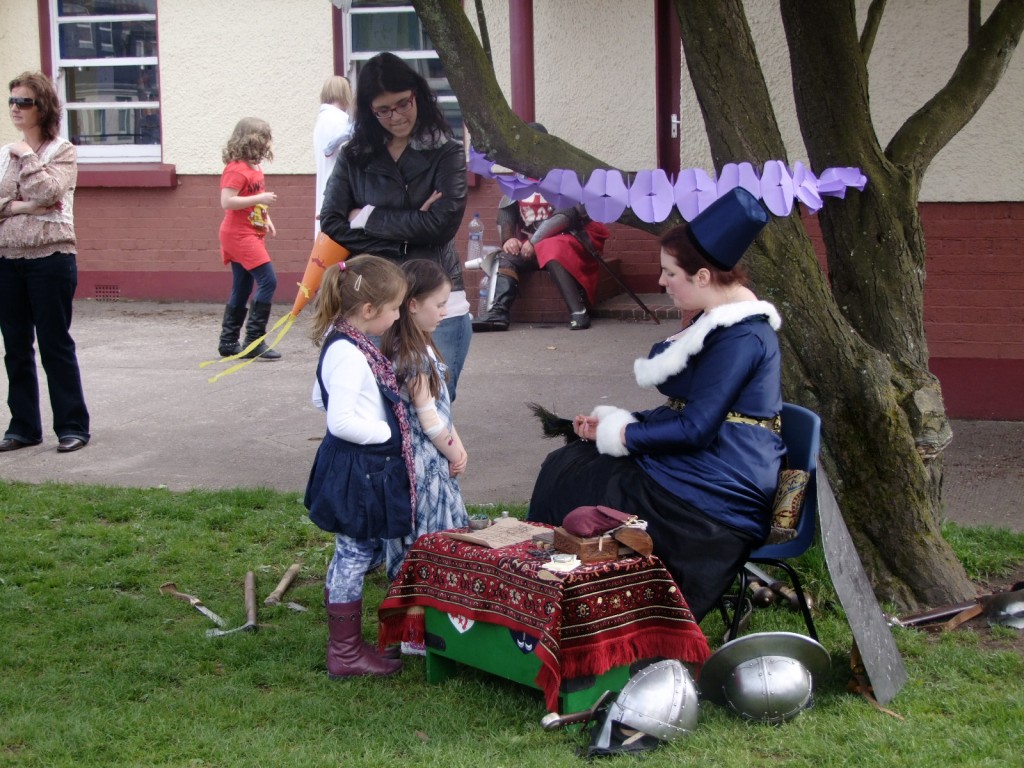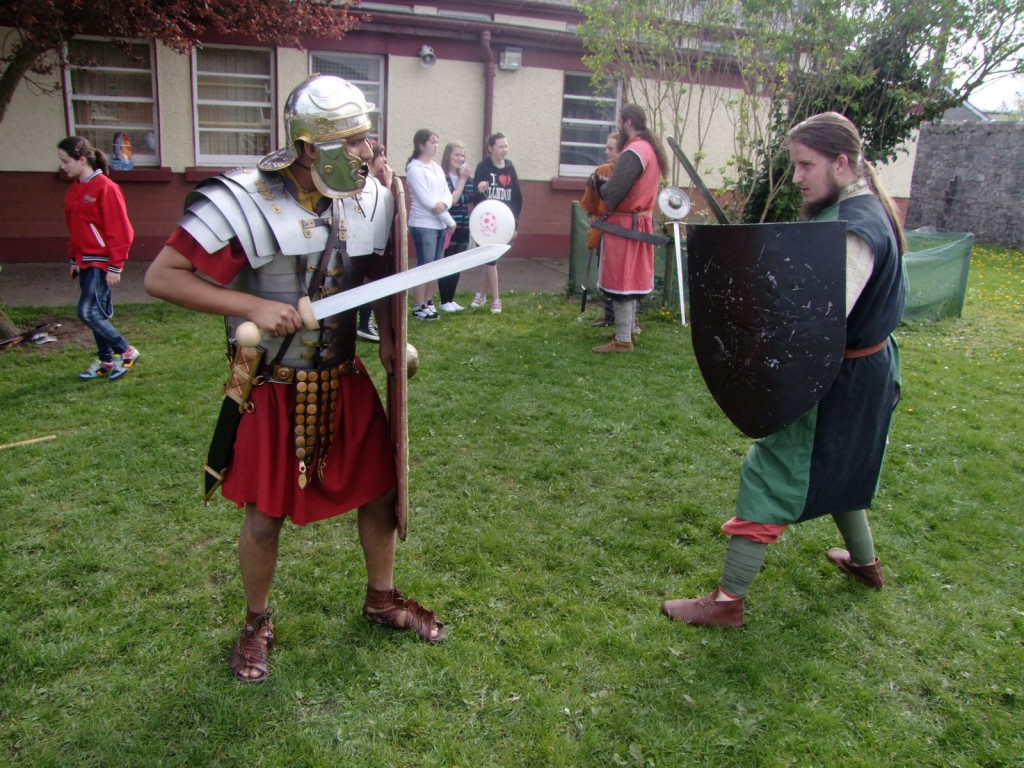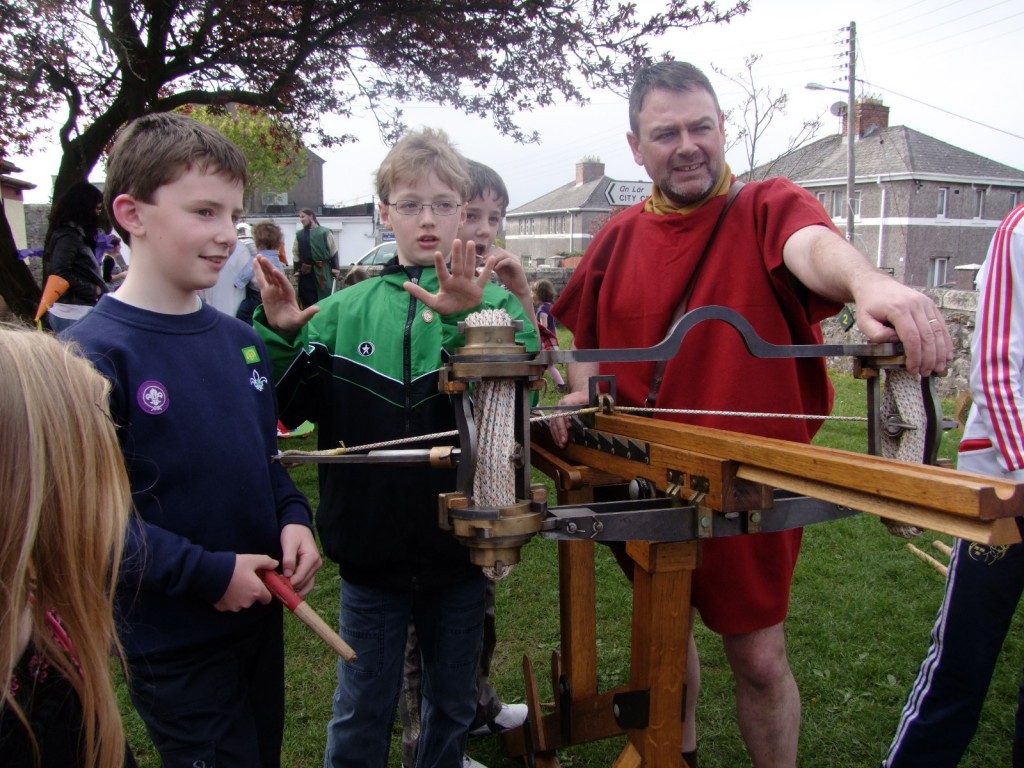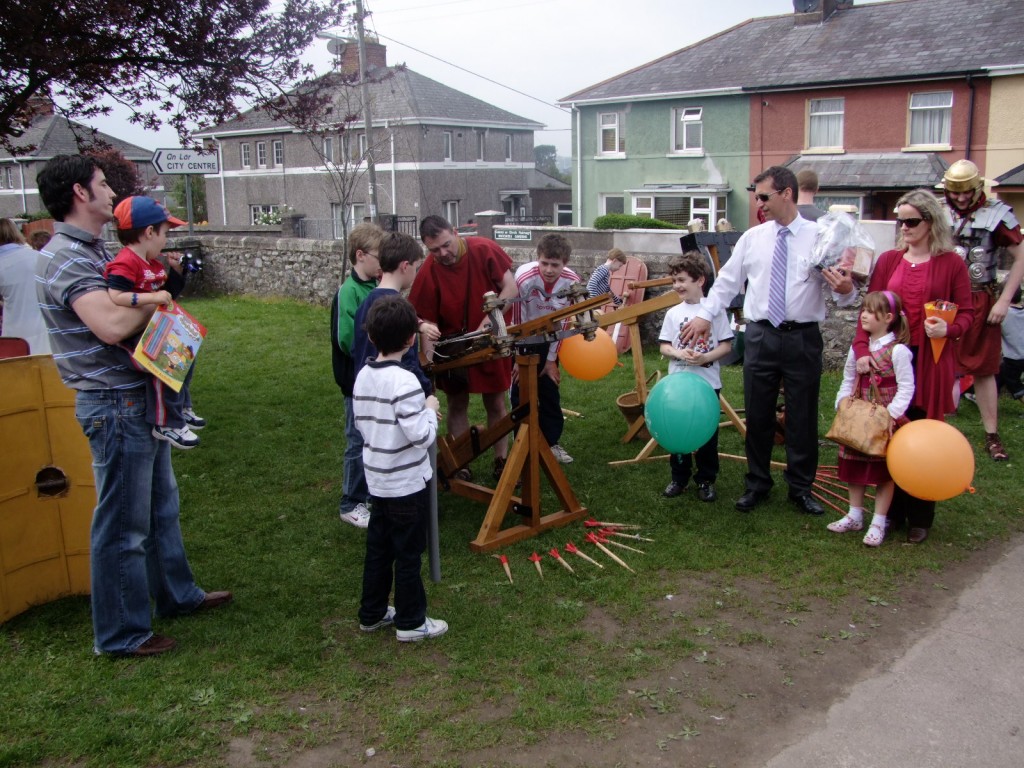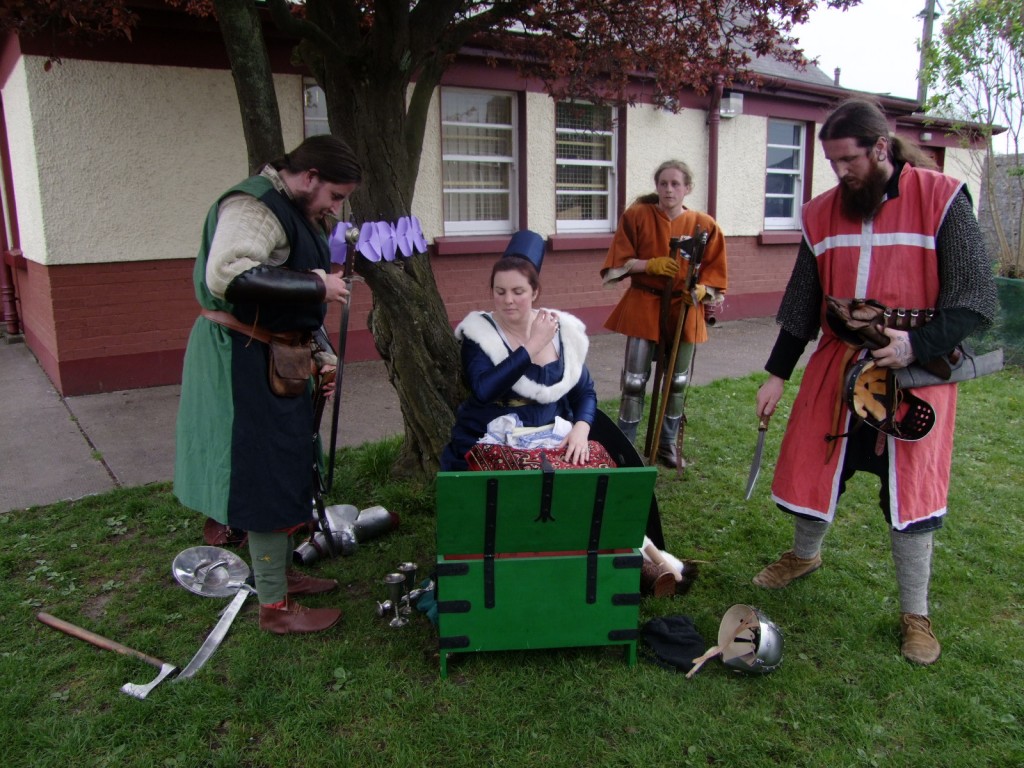
Category Archives: Ward Events
2011 Darren Swanton Memorial Great Stuff Caterers Cork City Rally Sprint, 22 May Plus Capping Pictures!
The 2011 Darren Swanton Memorial Great Stuff Caterers Cork City Rally Sprint will take place at the Kinsale Road civic amenity site on Sunday, 22 May.
The rally is named in honour of Darren Swanton — a former Cork Motor Club (CMC) member and motorsport fan from Grange, who died of cancer in 2009, aged 30.
The inaugural rally last year, which was won by Brian O’Keeffe, raised just over €28,000 for local charities. Organisers are hoping to top that amount this year. The main beneficiary will be Marymount Hospice, which cared for Darren in the final stages of his illness.
Marymount is due to open its new hospice at Curraheen later this year.
Brian Allen, whose company Great Stuff Caterers is sponsoring the event, said he was delighted to support the cause again. The event is being organised and promoted by Cork Motor Club in association with Cork City Council and the Bishopstown Lions Club.
The pictures below are of the landfill site, the c.180 acres, which are now nearly fully capped by a minimum of five feet in top soil, with nearly E.30 million spent on creating a public park, the grass on which will be planted next month!

















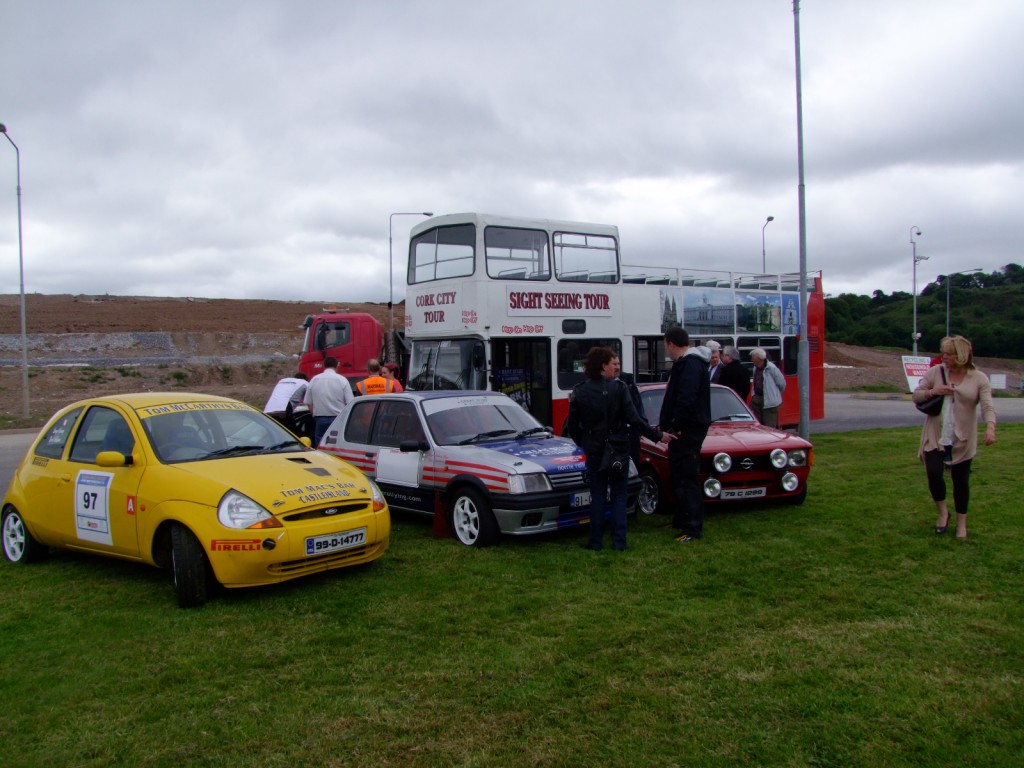
McCarthy’s Make a Model Boat Project, 2011
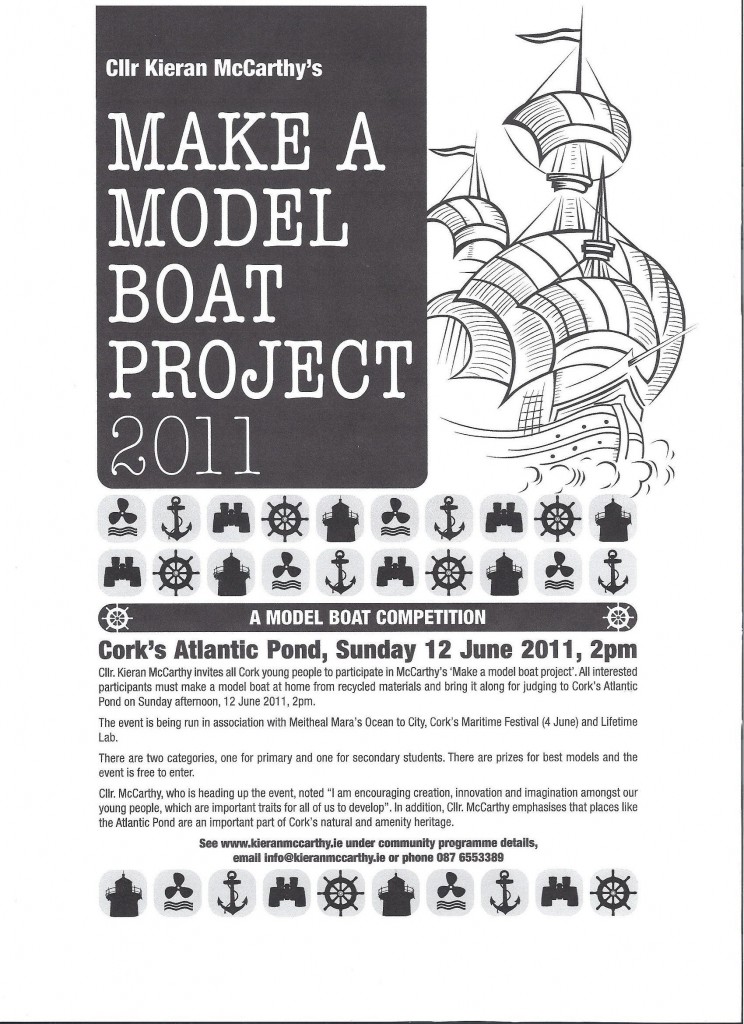

Final, McCarthy’s Community Talent Competition, 27 April 2011

Last Wednesday (27th April, 2011), the final of my third year of my Community Talent Competition took place at the Vertigo Suite or the 17th floor of Cork County Hall. Thanks to everyone for their support. I would like to thanks the finalists for their determination! You were all great! well done!
Junior Section:
Alexandria O’Donnell
Aisha McCarthy
Kelly Ann O’Flynn
The Pixie Chicks Group
Helen Nagle
Emma Field & Sarah Cronin (second place)
Aisling Donnelly (first place)
Pretty Little Liars Group (fourth place)
Cillian O’Sulivan (third place)
Senior Section:
Taylor Webster (second place)
Laurie O’Donnell (joint third place)
Ciara Crowley (joint third place)
Shannon White (first place)
My thanks also to Rob our video man, our sound man, Nicki Ffrench Davies and Livy Riordan for their mentoring, our judges Clare and Tess for their time and patience and Yvonne Coughlan of Red Sandstone Varied Productions for producing the project as always with enthusiam and flare!.






















McCarthy’s Artist in Residence Programme
McCarthy’s Artist in Residence Programme
Cllr Kieran McCarthy, through his ward funds and community programme, is seeking an artist from the south east ward of Cork City to take up his artist in residence scheme. Cllr McCarthy has teamed up Sample-Studios on the 2nd floor of the former FAS/Revenue Government Buildings at Sullivan’s Quay, Cork City to provide a studio space for a three month residency. Cllr McCarthy is searching in particular for a painter/ sketch artist with some experience and looking to pursue further work in a studio. Cllr McCarthy is particularly interested in completing a programme encompassing historical impressions of the city (artistic interpretations of eras in Cork’s past using maps and historical sources plus also perhaps to pursue artwork with a historical vein in the rich landscapes of the south east part of the city). The nature of the work is open to interpretation and can be negotiated.
Sample-Studios Limited is a non-profit association established at the beginning of 2011 by an artist-led board of directors hailing from a range of disciplines including, textiles, media, sculpture, paint, music and drama. The purpose of this association is to support and promote emerging and established contemporary practitioners of the arts from Cork and beyond, through affordable artist-run studios, to sustain and develop local, regional and international initiatives and to promote research and community outreach projects. Many of the members of the group offer education and help in areas such as computer design skills, arts administration, accounting and management skills as well as offering exhibition opportunities for the members of Sample-Studios.
For further details of McCarthy’s Artist in Residence Programme, please contact Cllr Kieran McCarthy at 087653389.
Historical Walking Tour, St. Finbarr’s Hospital, 16 April 2011
Thanks to everyone who came out to support the historical walking tour around St. Finbarr’s Hospital on Douglas Road and for all the contributions.
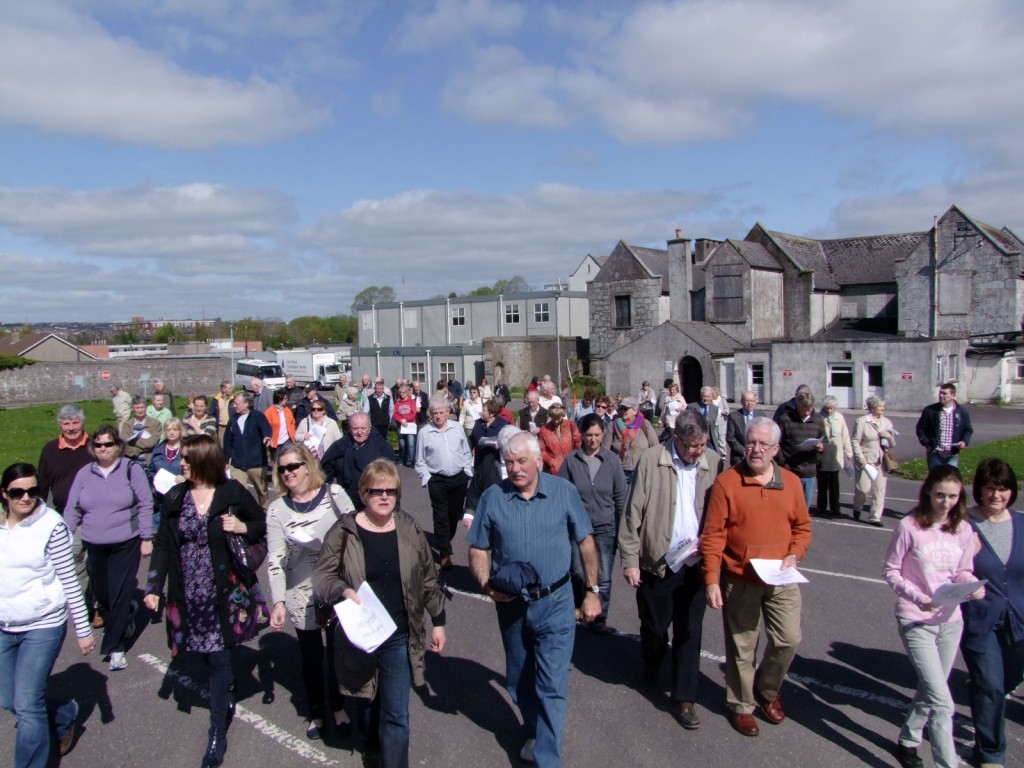
Did you know?
· St Finbarr’s Hospital, the city’s former nineteenth century workhouse, serves as a vast repository of narratives, memories, symbolism, iconography and cultural debate …plaques, haunted memories…
· When the Irish Poor Relief Act was passed on 31 July 1838, the assistant Poor Law commissioner, William J. Voules came to Cork in September 1838 to implement the new laws. Meetings were held in towns throughout the country. By 1845, 123 workhouses had been built, formed into a series of districts or Poor Law Unions, each Poor Law Union containing at least one workhouse. The cost of poor relief was met by the payment of rates by owners of land and property in that district.
· In 1841 eight acres, 1 rood and 23 perches were leased to the Poor Law Guardians from Daniel B. Foley, Evergreen, Cork; he retained an acre on which was Evergreen House with its surrounding gardens.
· The workhouse, which opened in December 1841, was an isolated place – built beyond the toll house and toll gates, which gave entry to the city and which stood just below the end of the wall of St. Finbarr’s Hospital in the vicinity of the junction of the Douglas and Ballinlough Roads (also the 1840s city boundary)
· The Poor Law Commissioners’ architect was George Wilkinson (1814-1890). He was Architect to the Poor Law Commissioners in Ireland from 1839 until 1855. George Wilkinson was born in 1814, a son of W.A. Wilkinson, carpenter and builder of Witney, Oxfordshire.
· Nearly all the workhouses, accommodating between 200 and 2000 persons apiece, were designed in a Tudor domestic idiom, with picturesque gabled entrance buildings which belied the size and comfortlessness of the institutions which lay behind them.
· In the workhouse, women and children were lodged in separated accommodation so that families were ruthlessly disrupted and loneliness and anxiety – mortality was high especially among infants.
· A typical day inside the workhouse was to rise at 6am, breakfast at 6.30am, work until 12 noon, lunch break and then work until 6pm. Supper was served at 7pm, with final lights out at 8pm. A roll call was carried out each morning.
· Between the years 1847 and 1872 the following contagious diseases raged at different times in Cork many times in Cork many cases of which were admitted to the Union workhouse Fever hospital: Small Pox, Asiatic Cholera, Typhus Fever, and all of them kept recurring.
· The first medical attendant was Dr. D.C. O’Connor. He was the first professor of Medicine at Queen’s College Cork, 1849-1888. He was also the first doctor as well of Mercy Hospital in 1857. He resigned from the workhouse in 1856.
· In 1870 the Board of Guardians invited the Sisters of Mercy to take charge of the Union Hospital with the sanction of Dr Delaney. Eight came from St. Marie’s of the Isle. Besides nursing- teaching of workhouse children – care of unmarried mothers and their children and any other religious or social task.
· c.1877- further extensions to Cork Union Workhouse was accomplished. State grants were forthcoming for the upkeep of the workhouses in Ireland these were raised by means of an estate duty and a liquor duty
· 1898- Workhouse name changed to Cork District Hospital
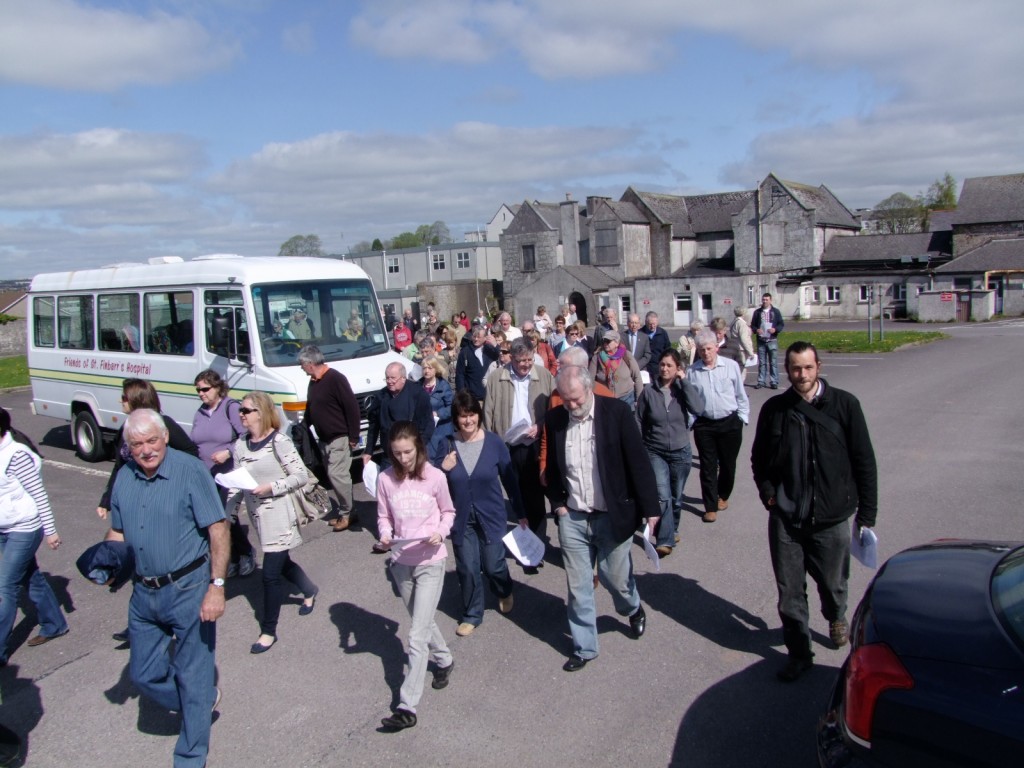
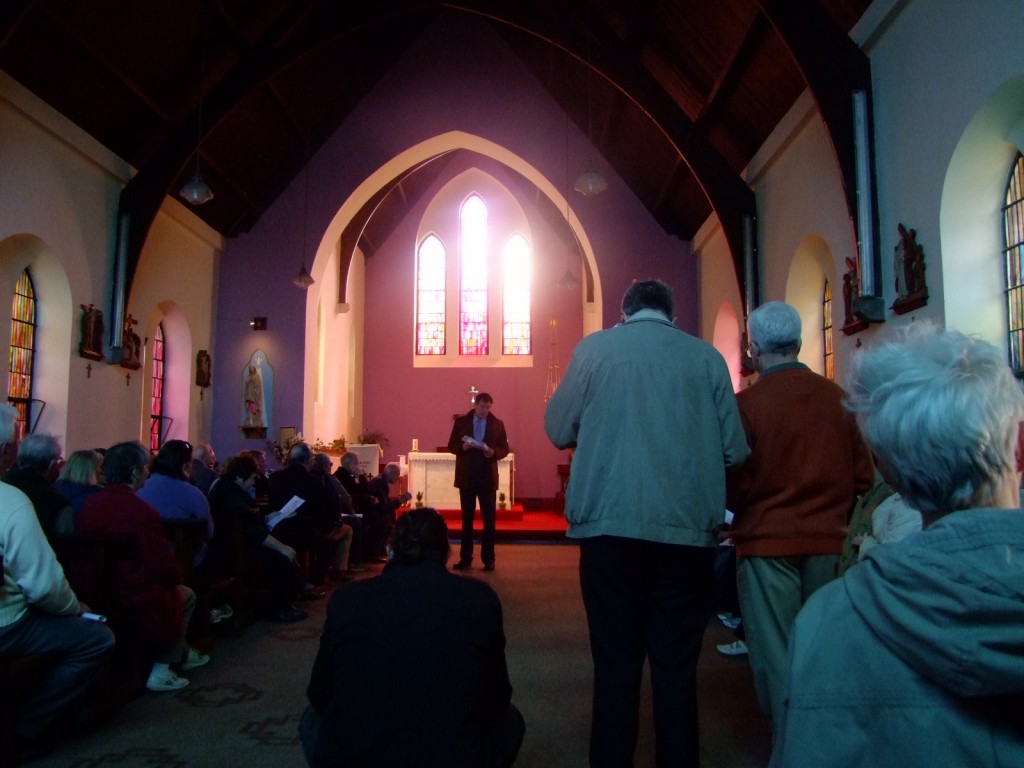
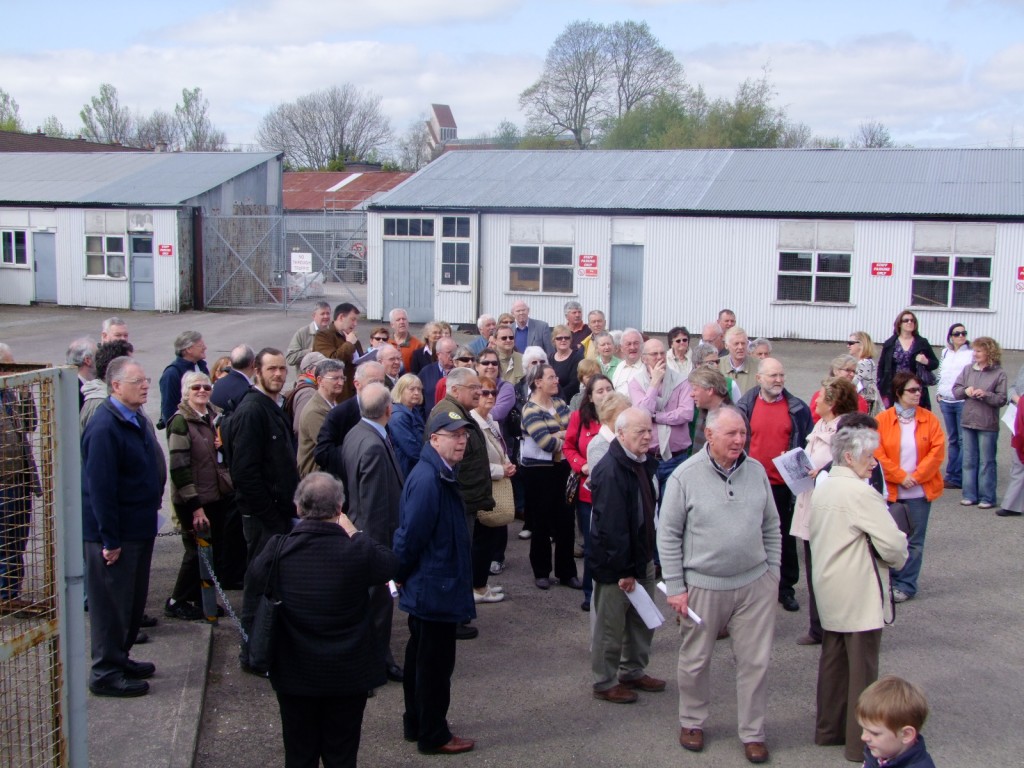
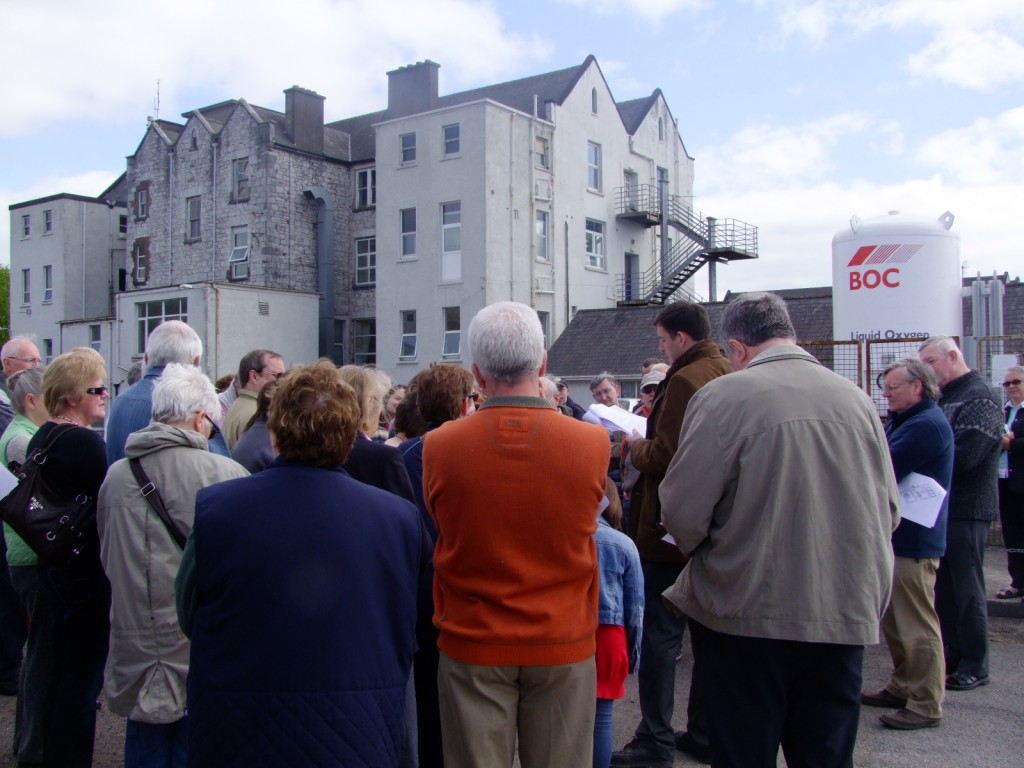
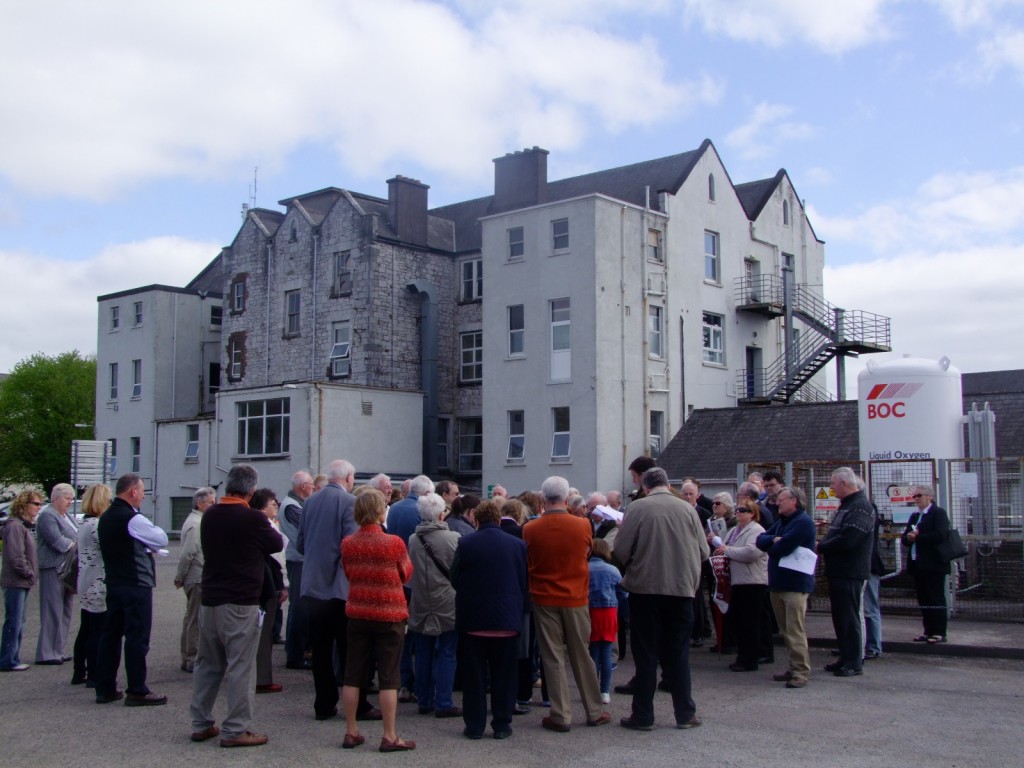
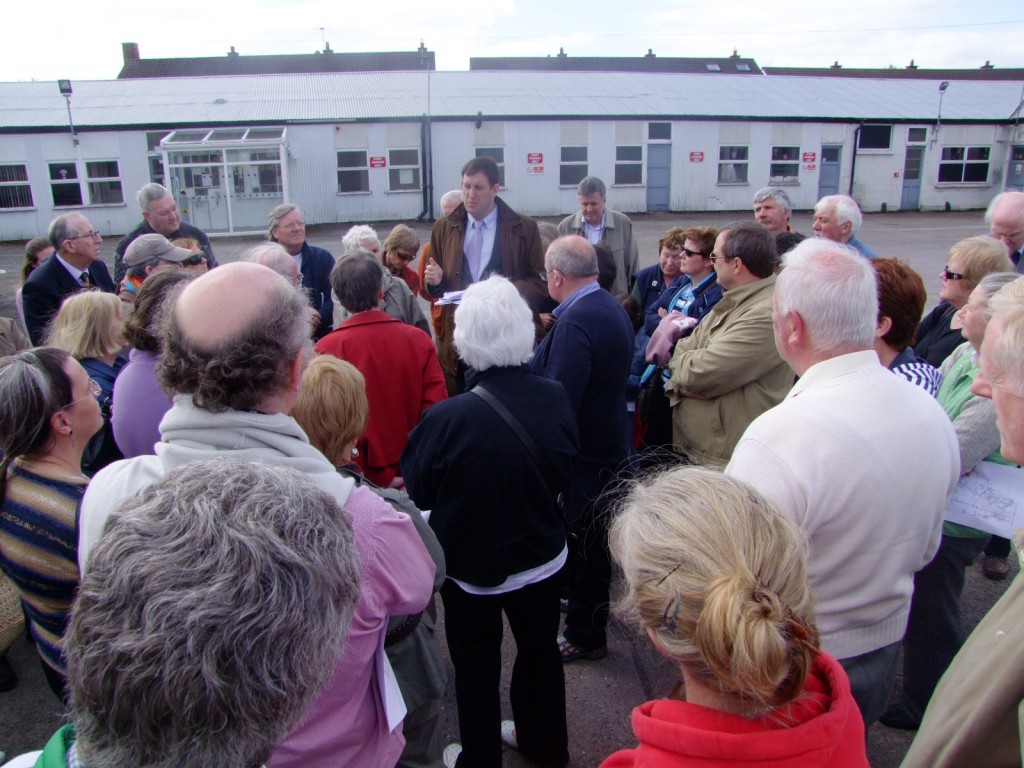
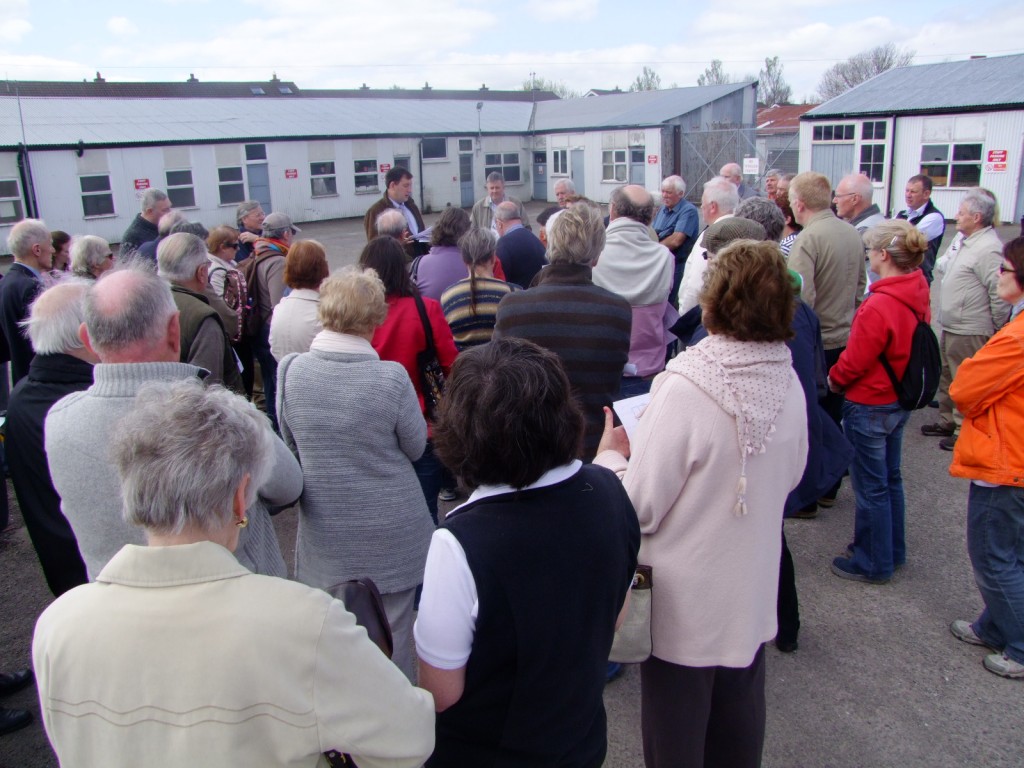
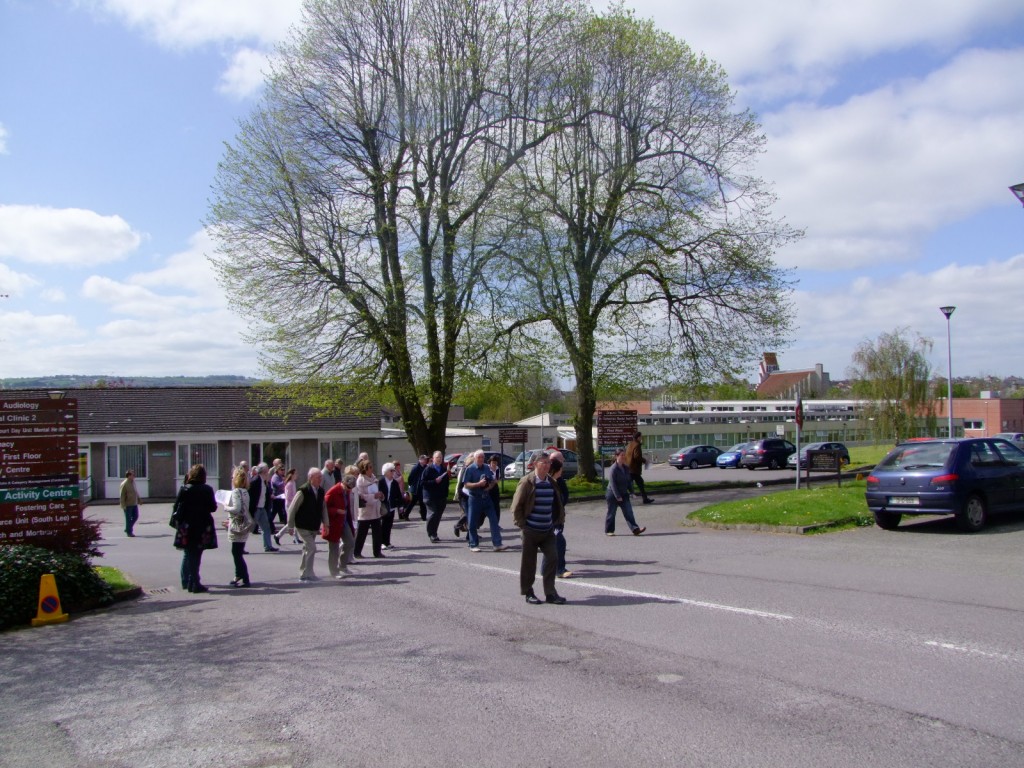
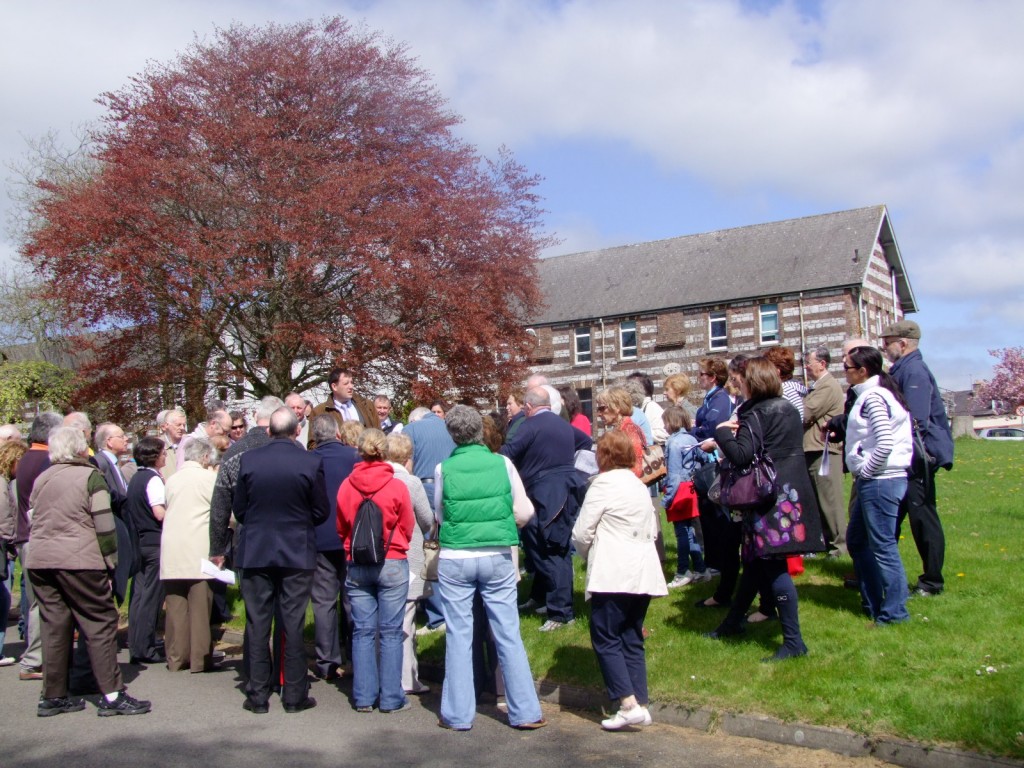
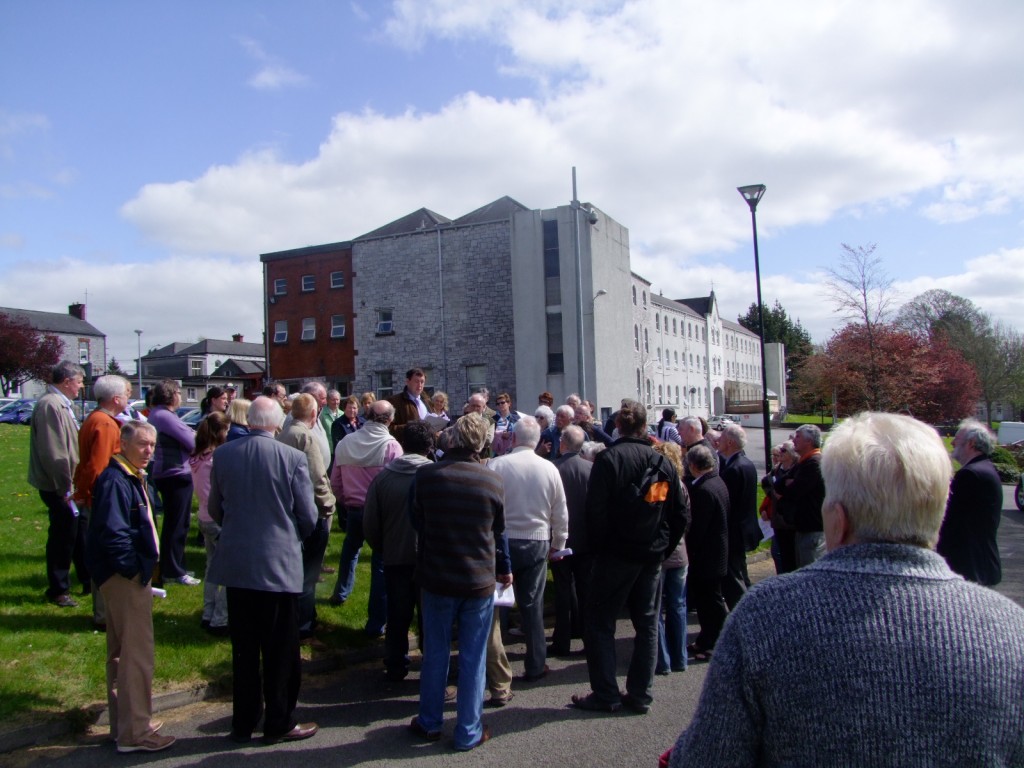

Kieran’s Historical Walking Tour, St. Finbarr’s Hospital, Cork, 16 April 2011
Thanks to everyone who came out to support the historical walking tour around St. Finbarr’s Hospital on Douglas Road and for all the contributions.

Did you know?- Some Historical Points on the early history of St. Finbarr’s Hospital (more historical walking tours to come)
· St Finbarr’s Hospital, the city’s former nineteenth century workhouse, serves as a vast repository of narratives, memories, symbolism, iconography and cultural debate …plaques, haunted memories…
· When the Irish Poor Relief Act was passed on 31 July 1838, the assistant Poor Law commissioner, William J. Voules came to Cork in September 1838 to implement the new laws. Meetings were held in towns throughout the country. By 1845, 123 workhouses had been built, formed into a series of districts or Poor Law Unions, each Poor Law Union containing at least one workhouse. The cost of poor relief was met by the payment of rates by owners of land and property in that district.
· In 1841 eight acres, 1 rood and 23 perches were leased to the Poor Law Guardians from Daniel B. Foley, Evergreen, Cork; he retained an acre on which was Evergreen House with its surrounding gardens.
· The workhouse, which opened in December 1841, was an isolated place – built beyond the toll house and toll gates, which gave entry to the city and which stood just below the end of the wall of St. Finbarr’s Hospital in the vicinity of the junction of the Douglas and Ballinlough Roads (also the 1840s city boundary)
· The Poor Law Commissioners’ architect was George Wilkinson (1814-1890). He was Architect to the Poor Law Commissioners in Ireland from 1839 until 1855. George Wilkinson was born in 1814, a son of W.A. Wilkinson, carpenter and builder of Witney, Oxfordshire.
· Nearly all the workhouses, accommodating between 200 and 2000 persons apiece, were designed in a Tudor domestic idiom, with picturesque gabled entrance buildings which belied the size and comfortlessness of the institutions which lay behind them.
· In the workhouse, women and children were lodged in separated accommodation so that families were ruthlessly disrupted and loneliness and anxiety – mortality was high especially among infants.
· A typical day inside the workhouse was to rise at 6am, breakfast at 6.30am, work until 12 noon, lunch break and then work until 6pm. Supper was served at 7pm, with final lights out at 8pm. A roll call was carried out each morning.
· Between the years 1847 and 1872 the following contagious diseases raged at different times in Cork many times in Cork many cases of which were admitted to the Union workhouse Fever hospital: Small Pox, Asiatic Cholera, Typhus Fever, and all of them kept recurring.
· The first medical attendant was Dr. D.C. O’Connor. He was the first professor of Medicine at Queen’s College Cork, 1849-1888. He was also the first doctor as well of Mercy Hospital in 1857. He resigned from the workhouse in 1856.
· In 1870 the Board of Guardians invited the Sisters of Mercy to take charge of the Union Hospital with the sanction of Dr Delaney. Eight came from St. Marie’s of the Isle. Besides nursing- teaching of workhouse children – care of unmarried mothers and their children and any other religious or social task.
· c.1877- further extensions to Cork Union Workhouse was accomplished. State grants were forthcoming for the upkeep of the workhouses in Ireland these were raised by means of an estate duty and a liquor duty
· 1898- Workhouse name changed to Cork District Hospital











Kieran’s Our City, Our Town, History Tour of St. Finbarr’s Hospital, 16 April 2011
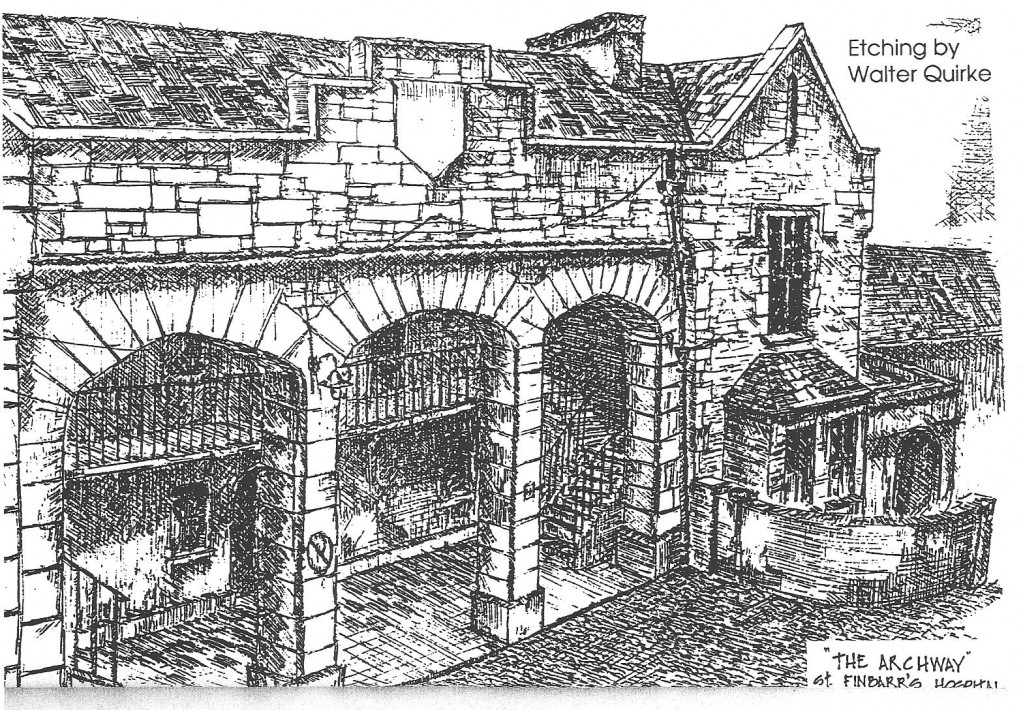
Kieran’s Our City, Our Town Article,
Cork Independent, 14 April 2011
History Tour of St. Finbarr’s Hospital
Next Saturday morning, 16 April at 11am in association with Turners Cross Community Association for the Lifelong Learning Festival, I will conduct a historical walking tour of St. Finbarr’s Hospital (meet at gate). In one sense, this article is another aside article to the Lee but that being said, how one attempts to work through a heritage site and what memories should a researcher focus in on the modern world are all issues that again and again frequent my research.
This time round there is also the added issue of me living in the area and the fact that every day of my life, I have passed the hospital. I have always admired the view from the entrance gate onto the rolling topography extending to beyond the southern boundaries of the City. Here also is the intersection of the built heritage of Turners Cross, Ballinlough and Douglas. These are Cork’s self sufficient, confident and settled suburbs, which encompass former traditions of market gardening to Victorian and Edwardian housing on the Douglas Road. Then there is the Free State private housing by the Bradley Brothers such as in Ballinlough and Cork Corporation’s social housing developments, designed by Daniel Levie, on Capwell Road. Douglas Road as a routeway has seen many changes over the centuries from being a rough trackway probably to begin with to the gauntlet it has become today during the work and school start and finish hours.
However for all of what I have said I can argue that all of the above memories and mixed histories make these areas places of experiment in their time of creation– the erection of stately red bricked 1880s housing on roads like Cross Douglas Road started a trend to build new suburbs for the middle class just outside the city boundary in the late 1800s. In more recent times I have become more intrigued studying the affects of Free State Ireland and the aspirations of events like the Irish Industrial and Agricultural Fair in 1932- those aspirations for creating a better Ireland and in Cork the movement of people from the inner city slums to new housing estates like Capwell. Capwell’s post office and its sign 1926 is of change in that time not to mention Barry Byrne’s designed Christ the King Church, an imposing monument in itself to honour change and also to Cork’s continuously outward looking vision to the world. In this case, go google Church of Christ the King, Tulsa Oklahoma to see what the Turners Cross is modelled on.
Standing at the gate of St. Finbarre’s Hospital reflecting on all the above histories and memories above begs the question on how do you even blend these in to a tour without leaving your audience behind. With mid nineteenth century roots, the hospital was the site of the city’s former workhouse but as such here is one of Cork’s and Ireland’s national historic markers. Written in depth over the years by scholars such as Sr. M. Emmanuel Browne and Colman O’Mahony, what has survived to outline the history of the hospital are many indepth primary documents. What shines out are the memories of how people have struggled at this site since its creation in 1841. Other topics perhaps can also be pursued here such as the history of social justice at the site, why and how society takes care of the vulnerable in society and the framing of questions on ideas of giving humanity and dignity to people and how they have evolved over the centuries.
The key feature of this new tour or trail is the story of the hospital and an attempt to unravel its memories. The Hospital serves as a vast repository of memories, symbolism, iconography and cultural debate. It has plaques, ruins and haunted memories. Standing at the former workhouse buildings, which opened in December 1841, there is much to think about – humanity and the human experience. The architect to the Poor Law Commissioners in Ireland from 1839 until 1855 was George Wilkinson. Nearly all the workhouses, accommodating between 200 and 2000 persons apiece, were designed in a Tudor domestic idiom, with picturesque gabled entrance buildings which contracted the size and comfortlessness of the institutions which lay behind them. By April 1847 all 130 workhouses were complete, the Douglas Road being one of the first.
With its association with the memory of the Great Famine, there are also many threads of the history of the hospital to interweave – the political, economic and social framework of Ireland at that time plus the on the ground reality of life in the early 1800s – family, cultural contexts, individual portraits. In the present day history books in school, the reader is drawn to very traumatic terms. The recurring visions comprise human destruction, trauma, devastation, loss. One can see why the Great Famine is more on the forgetting list than on the remembering one.
The walking tour next Saturday is an attempt to unravel some of the memories of the workhouse, how also it evolved into the present day hospital and also connect it into the history of the wider area.
Captions:
586a. Sketch of former workhouse building, St. Finbarr’s Hospital (source: Walter Quirke)
586b. Section of Ordnance Survey Map, c.1846 showing the Union Workhouse, Douglas Road (source: Cork City Library)
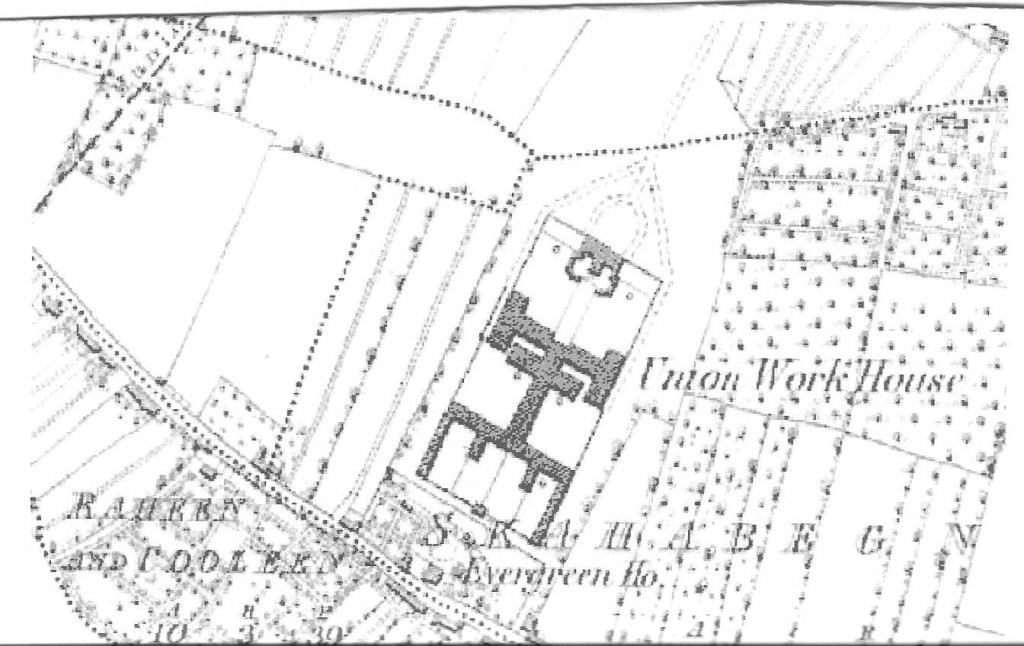
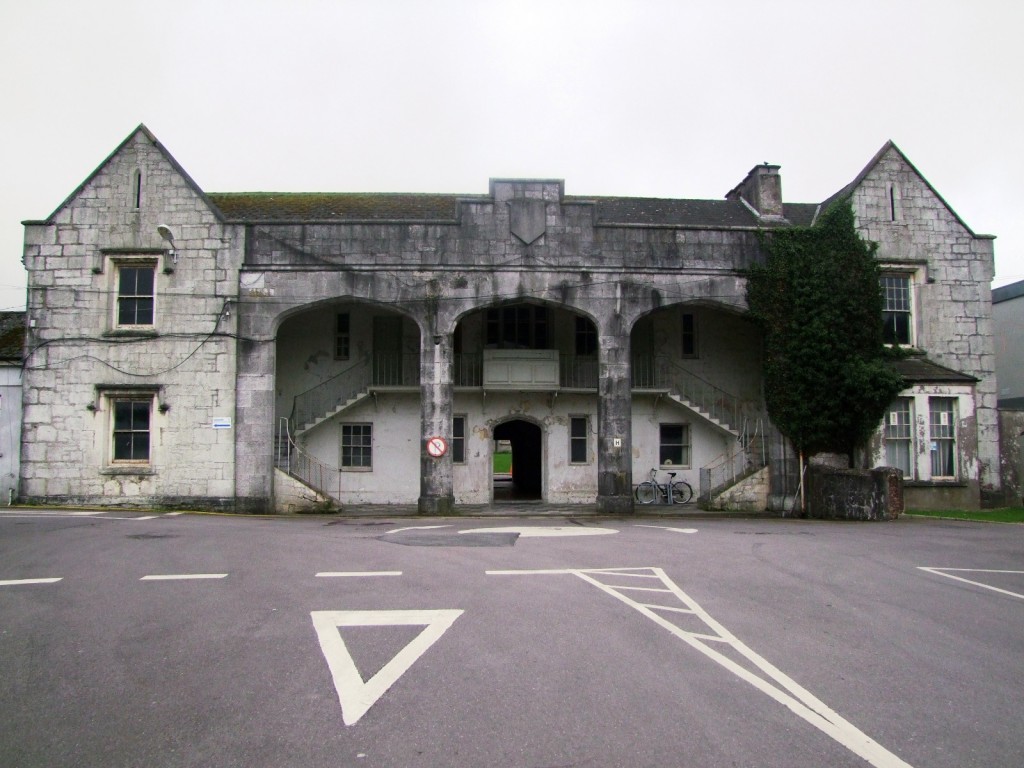
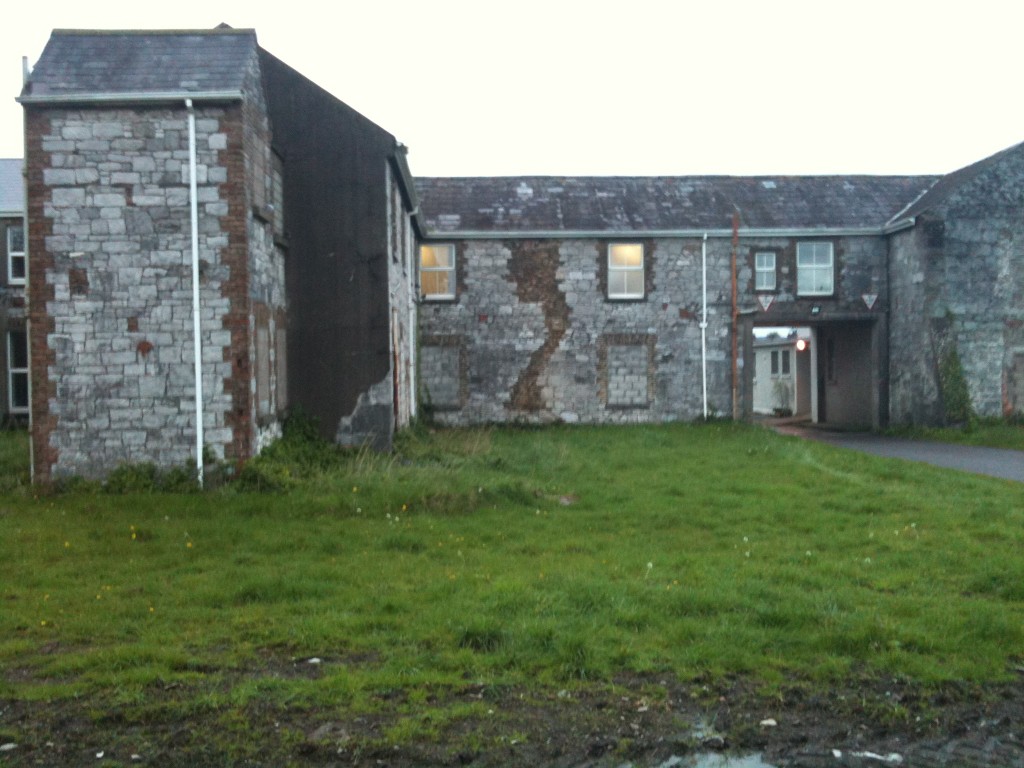
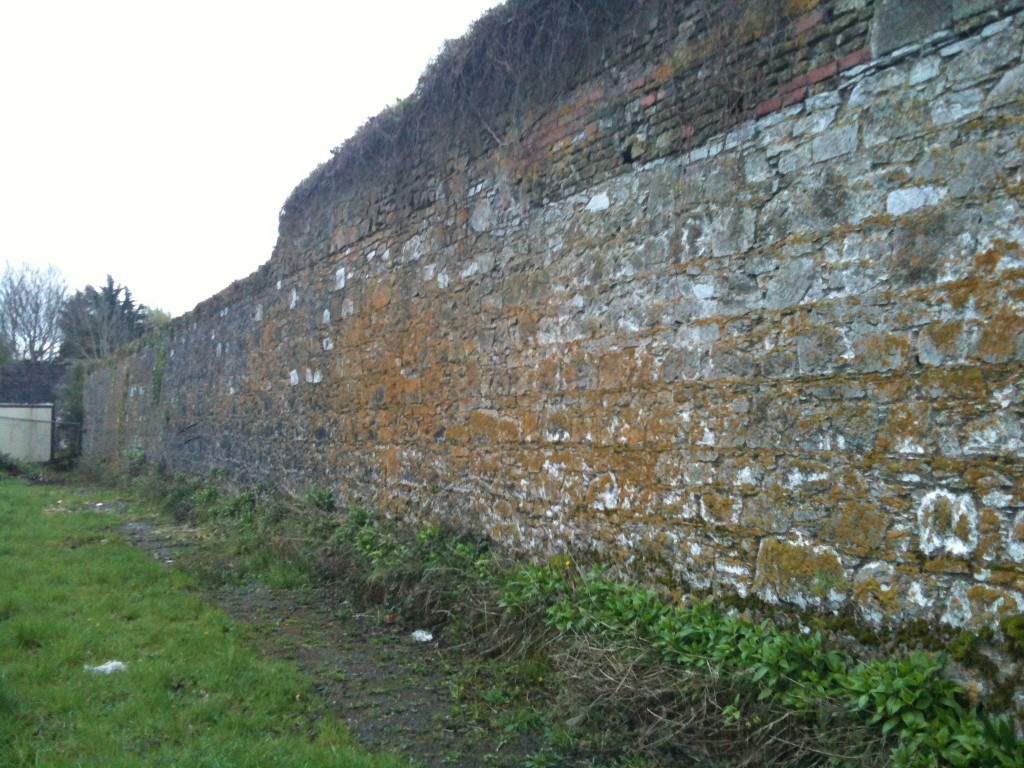
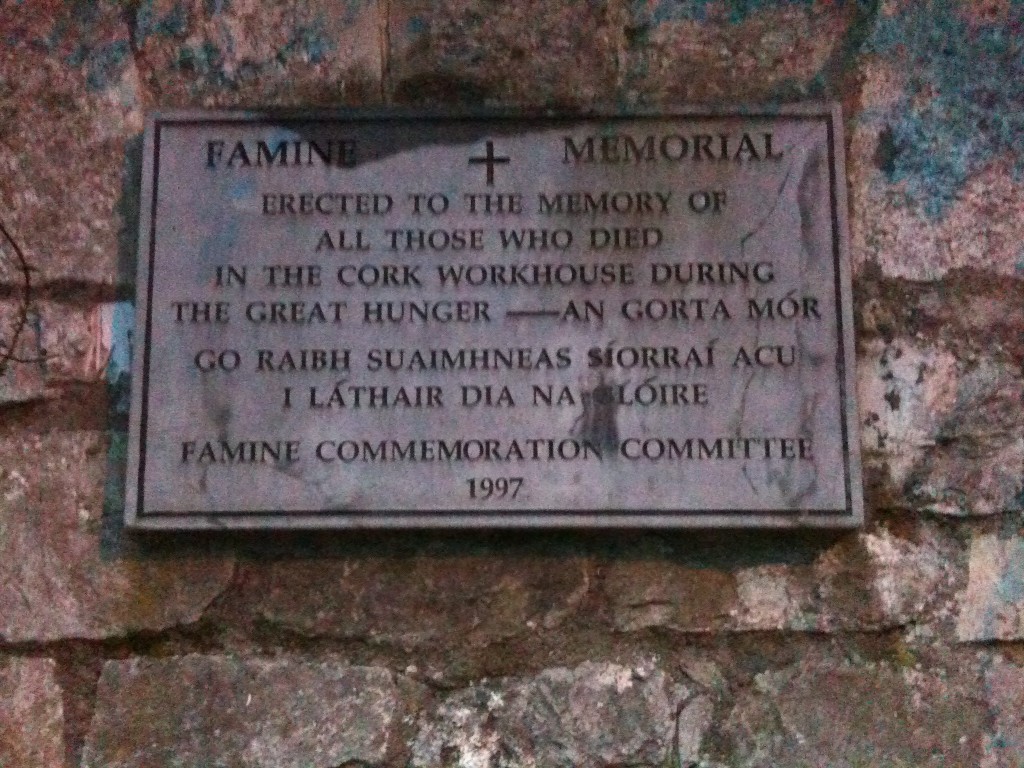
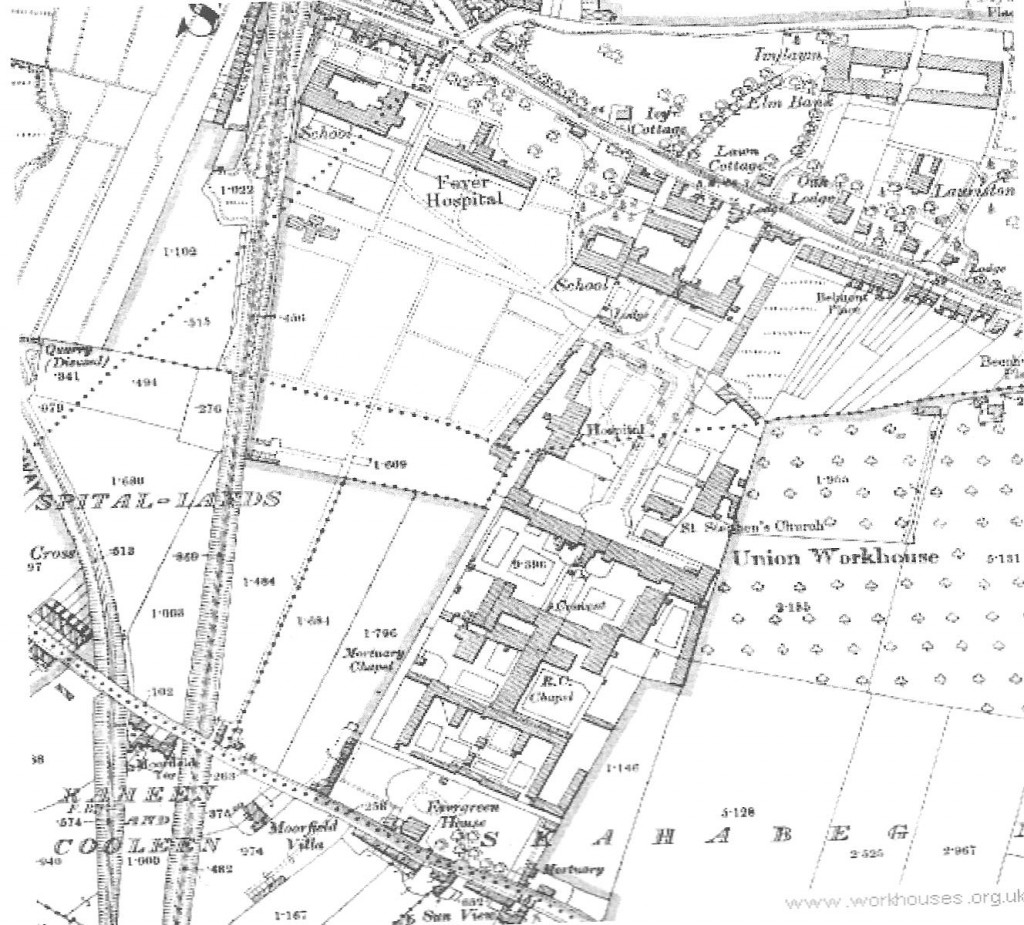
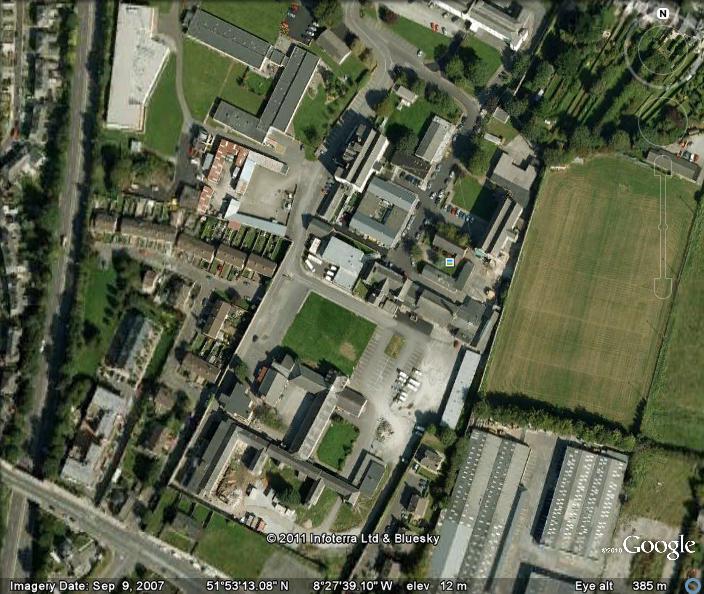
Ballinlough Community Association AGM, 12 April 2011
Adapted speech notes from Kieran (me!)
…..A Positive Community:
In general at the moment in Ireland, all communities need a plan to create a better society, something that is better that what we left during the now mythic Celtic Tiger days. We need to take responsibility for part of this plan as well.
We need realistic steps to achieve that. We have a very positive community association plus a community with leaders with strong voices for keeping up a sense of pride, place and identity. The programme of this Community Association is made up of real steps. All too often we hear about a general vision for Irish community life but ultimately we need engines…drivers like yourselves to move it forward.
For many years all of you have worked at the heart of the community of this important corner of the world so that it will not become stale and disillusioned. You have pursued this through times of massive transformation in the Ballinlough area – new houses, new generations, the need for more car spaces and the decline in the public realm of some our amenity areas.
Two parts:
At present, there seems to be two growing numbers of people in Ballinlough, our mature population – there is a marked increase in the number of widows and secondly a marked increase in young families with young children and teenagers. And both need to be equally provided for. We need to invest in both generations bringing them along into the 21st century.
We are all aware of the great work that goes on for our more mature side of our population. We are all very proud of these fantastic efforts and all that is done and we have heard reports on that tonight. The latest edition I’m a big fan of the over 60s singing competitions…maybe I would like to see more social events- music and entertainment at seasonal times. These are dark days through which we have to mind ourselves more.
In terms of our youth projects we have all admired the great work conducted since 1978 in the Canon Horgan Hall and the renewed energy over the last two years by the Youth Clubs Committee in brining such projects such as the End of Summer Festival, Halloween parade, Christmas Soiree and Easter Parade to fruition. It is also important and essential that these projects receive a balance of funding from the association.
I see as well that in time that the Youth Hall will have to be redone in the next couple of years. That will be a major project and will require much energy. I was disappointed recently to see the lack of support by parents in the community for a youth cafe in Ballinlough, whereas in other areas of the city, sums of up to E.50,000 were accessed to set up projects.
There are also acres of young people living in this area and who pass through this area every day. Young people bring vibrancy and energy to any work they engage with. Most are also looking for opportunities to develop their talents and to fit in. It is important that we continue to get the younger generation involved in some shape or form – they are the next generation who need all our support and need the experience, wisdom and support of the older generation to move forward. There have been many examples of community groups in Cork City, even near here that have aged and died off with a slow and in some cases no reboot. I would encourage your group to approach our local secondary schools and develop some way of bringing our young people on board.
I would also like to see some members of the youth clubs committee on the community association and I’m going to argue vice-versa – the promotion of both our older people’s programme and our young people’s programmes together are very important and should be reflected on and acted upon. With all that said though, I wish to relay that in the last year I have had much positive feedback from other community associations in the ward on how Ballinlough is thinking outside of the box and pursuing engaging community project and people asking how is Ballinlough doing that?
To conclude….
It is my own view that community leaders are like giant spotlights in the sky; they can and will continue to uphold human values for all to see and replicate, they can send out the message that we do need to care – care about something… to do something purposeful…to move yourself forward… to hone our personal talents, which we all have or even seek advice.
Today’s Society needs all of those traits in abundance.
I would also like to thank the people of Ballinlough for supporting me on my initiatives – marketing programme, History in Action, the Talent Competition and the history tour across the area last August– plus adding immensely to these working tours through their personal knowledge of the area.
I hope to continue the tour hopefully next month. Next Saturday I have a walking tour of St. Finbarr’s Hospital exploring its history and that side of Ballinlough- Turner’s Cross and if there are people interested you are more than welcome to come along starting at 11am.
I am delighted to be present tonight and look forward to working with you again in the following year.
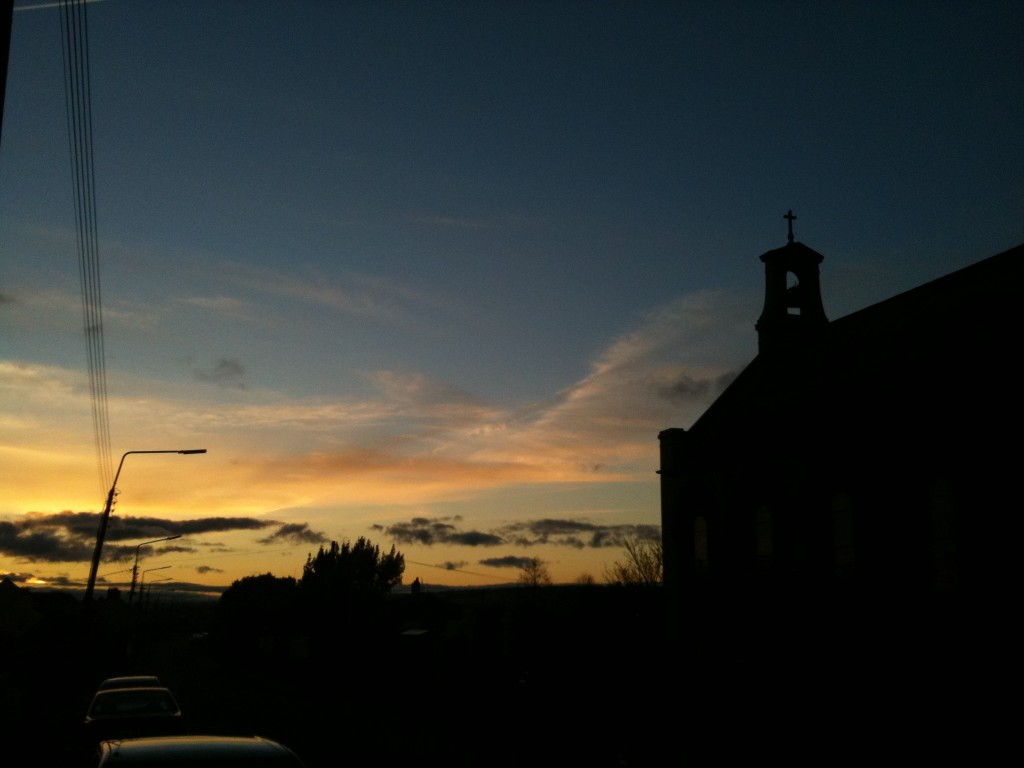
McCarthy’s History in Action, 10 April 2011
‘McCarthy’s History in Action’ is funded by me through my ward funds. This year the event took place today (Sunday 10 April 2011) as part of the Easter Fair of Our Lady of Lourdes National School, organised by their parents association. The re-enactors, headed up Martin McRee, showed all those interested what life was like in the past through their costumes and weaponry. I took the pictures below. Enjoy!


